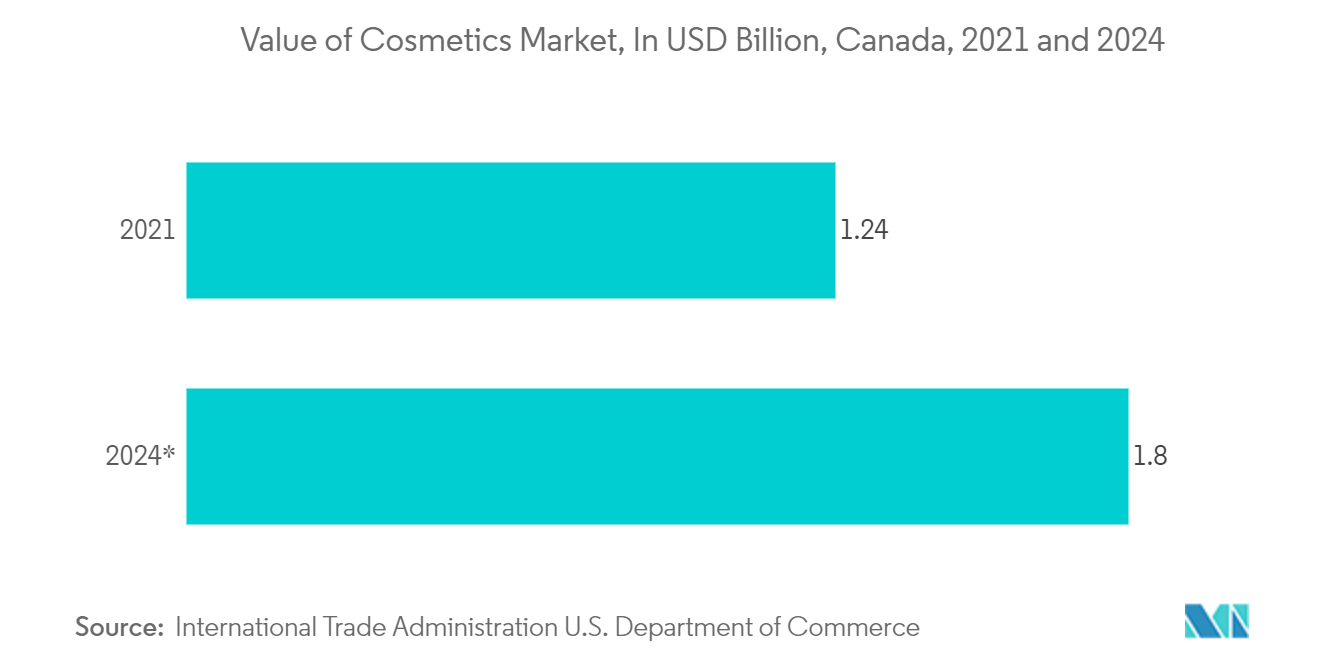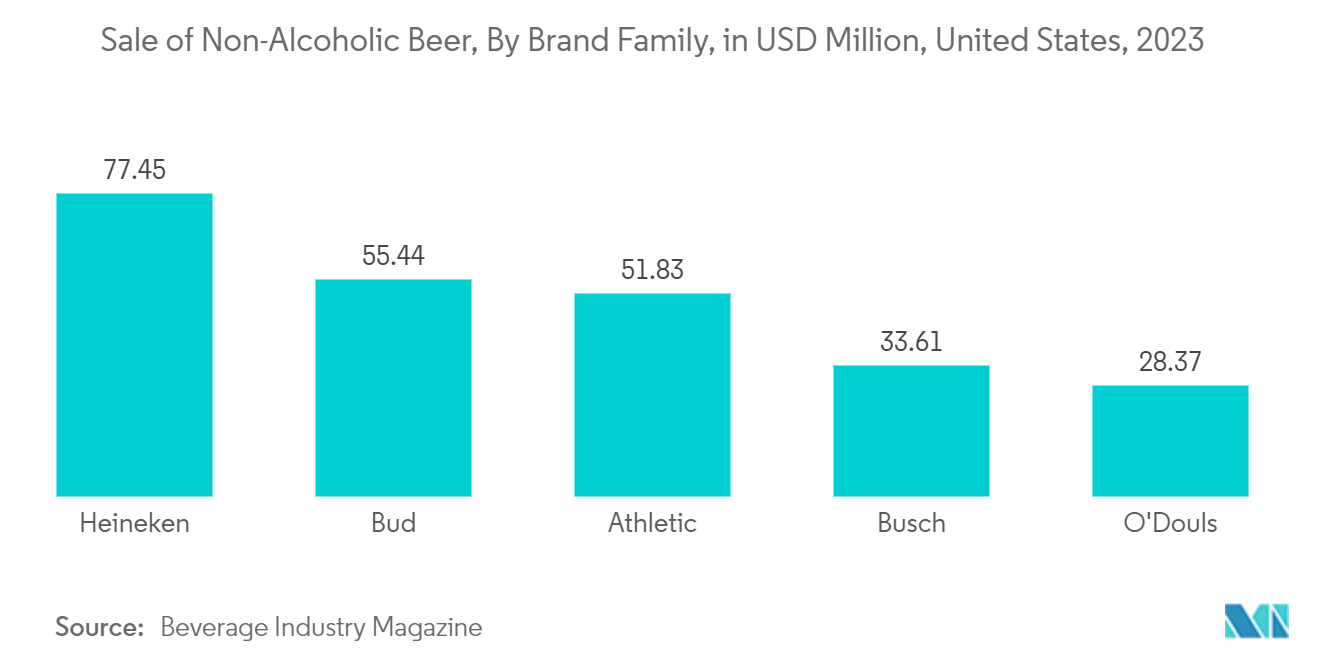Market Trends of North America Rigid Plastic Packaging Industry
Polyethylene Terephthalate (PET) is Expected to Witness Significant Growth
- The use of PET plastic bottles is increasing. The need for PET packaging in both the bottled and soft water segments is also growing. Many creative, cost-effective, and eco-friendly packaging options are already available. PET is a well-known material that offers a range of advantages, such as shatterproofness, non-reactivity when in contact with drinks, and a high strength-to-weight ratio.
- Additionally, its lightweight properties provide cost savings when transporting products. PET is a secure material for beverage products and is approved by the Food and Drug Administration (FDA) in the United States and similar regulatory bodies throughout North America.
- The Canadian beauty and personal care industry represents a significant opportunity for US cosmetics exporters. Emerging market trends are contributing to the growth of Canadian beauty products, including tailoring products to consumers' age, gender, and ethnicity using technology to enhance marketing strategies. Such factors drive the market for PET packaging in the country.
- According to the International Trade Administration and the US Department of Commerce, in 2021, the Canadian cosmetics market was expected to be valued at approximately USD 1.24 billion. The revenue is projected to increase by 1.45% per annum to USD 1.8 billion by 2024.
- Over the past decade, the volume of sales of US bottled water has grown steadily each year. With the increasing demand for bottled water, PET is becoming the preferred material as it is lightweight, durable, and recyclable. The increase in bottled water sales will aid the sales of PET packaging, boosting the segment.

The United States is Expected to Occupy a Major Market Share
- The food and beverage end-user industry is a major contributor to the market. As people become more aware of their health, the demand for healthy drinks is on the rise. As personal incomes have increased, bottled water has become a more attainable option for individuals, thus contributing to the expansion of the rigid plastics market.
- The development of the rigid plastic packaging market will be significantly impacted by the growth of food and beverage retail stores. As food and beverage consumption increases, so does the demand for packaging materials and solutions to meet that demand.
- According to the US Census Bureau, retail sales of food and beverages in the United States amounted to approximately USD 985.3 billion in 2023. Further growth is expected to be witnessed during the forecast period, which would also boost the demand for rigid plastic packaging options like bottles, containers, jars, caps, and others.
- Soft drinks, commonly referred to as soda or carbonated beverages, fall under the non-alcoholic beverage industry. These drinks typically consist of water, sugar, artificial sweeteners, and flavoring agents. Given their widespread popularity, the demand for beverage caps and closures is poised to rise. As reported by World Population Review, the United States ranks among the top consumers of soda globally. On average, each American consumes about 154 liters of soda annually, with nearly 20% of the population indulging in at least one soda daily. This consistent consumption fuels a steady demand for plastic soda bottles nationwide.
- As the demand for non-alcoholic beverages increases, the demand for rigid plastic packaging materials, such as containers, bottles, and caps, for the packaging and distribution of these beverages is likely to increase. Alternative packaging technologies like PET bottles are lighter and more manageable than their glass counterparts. According to Beverage Industry Magazine, in 2023, Heineken emerged as the top brand family in the US non-alcoholic beer market, with sales exceeding USD 77 million. This could lead to an increase in the demand and production of rigid plastic packaging bottles from North American non-alcoholic beverage manufacturers.


